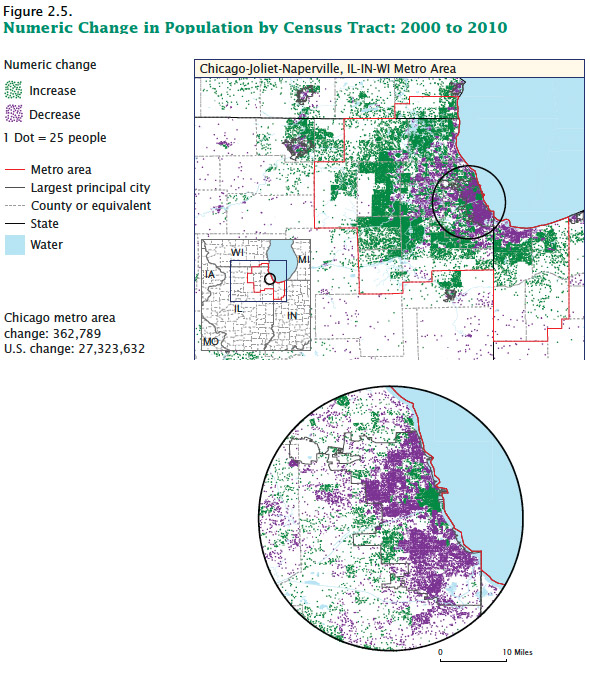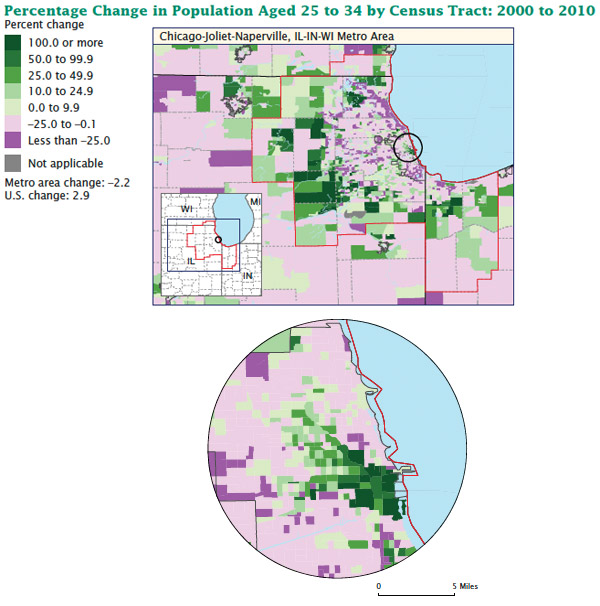One of the ongoing themes in American cities over the past decade has been their Europeanization—their specific physical transformation, as Aaron Renn describes: "Whereas in the past the inner city was decayed and the suburbs were nice, this trend is starting to invert as central cities gentrify and it is inner ring suburbs that now find themselves in decay." Renn thinks this trend has been a bit overrated as a national phenomenon, but it's definitely happening in Chicago, as you might have read recently:
Rob Paral, a Chicago demographer, says the city's downtown population growth reflects several underlying economic factors, including downtown revitalization and an expanding job market.
But though places like the South Loop and West Loop have benefited from the trend, Paral says, its effects quickly fade the farther out you go.
"There's a big difference between what you see in downtown and what you see in other parts of the city," he said. "We wish it would be happening within 20 miles of City Hall, but no city has that kind of prosperity."
But it's not just 20 miles out where it fades; it's just outside the loop, as the Census Bureau's maps show.

There's been some sporadic growth near Midway—Clearing, West Lawn, and West Elsdon, likely due to an influx of Hispanic immigrants and a subsequent baby boom. Otherwise, the growth has largely been confined to downtown and the near north side. Unsurprisingly, the growth runs northwest along a thick transit corridor, between the Blue Line, Milwaukee Avenue, I-90, the Brown Line, and the Red Line.
The result is a younger population in the inner city, and an aging one surrounding it, though the geography is a bit different:

Within two miles of City Hall, Chicago had the largest population increase of any major urban area over the past decade, from 133,426 to 181,714, an increase of 36 percent (New York's grew by 37,422). Outside of that radius it's a different story, as Wendell Cox details.


